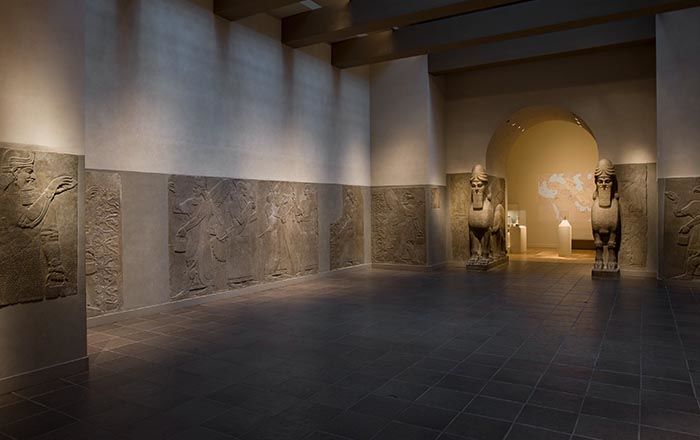Drone Hits Great Ziggurat of Ur
Not on view
Hanaa Malallah’s work makes visible the deep connections between the ancient past and contemporary life in Iraq. There have been many changes in the landscape, including the transformation of once-fertile agricultural land to desert through intensive irrigation, and the abandonment of ancient canal networks that connected early cities like Eridu, Lagash, Ur, and Uruk. But great building projects such as the ziggurats still remain visible, whether they have been restored (as is the case with the ziggurat in this video) or left alone. Malallah’s exploration of the ziggurat via drone switches between close-ups and wide shots, moving in an unpredictable path in an attempt to visually take in the massive structure. While smoothly edited footage might allow viewers to imagine that they are an invisible observer with a godlike perspective, the disjointed shots and the views of the woman operating the drone undermine this perspective by making the work of filming visible. Similarly, the buzzing sound of the drone’s propellers grounds the film firmly in the present day, cutting off the possibility of immersion in the ancient past and bringing in associations with the use of drones by the US military. The drone’s persistent noise disturbs Orientalist fantasies of timelessness, grounding the ancient structure firmly in today’s world of flying robots and military surveillance. At the same time, through her investigation of the earth surrounding the ziggurat, Malallah brings to our attention the fact that both the ancient landscape and the contemporary one were, and are, shaped by the intensive interaction of earth, water, and sun—a collapsing of time within the specific landscape conditions of southern Iraq.
